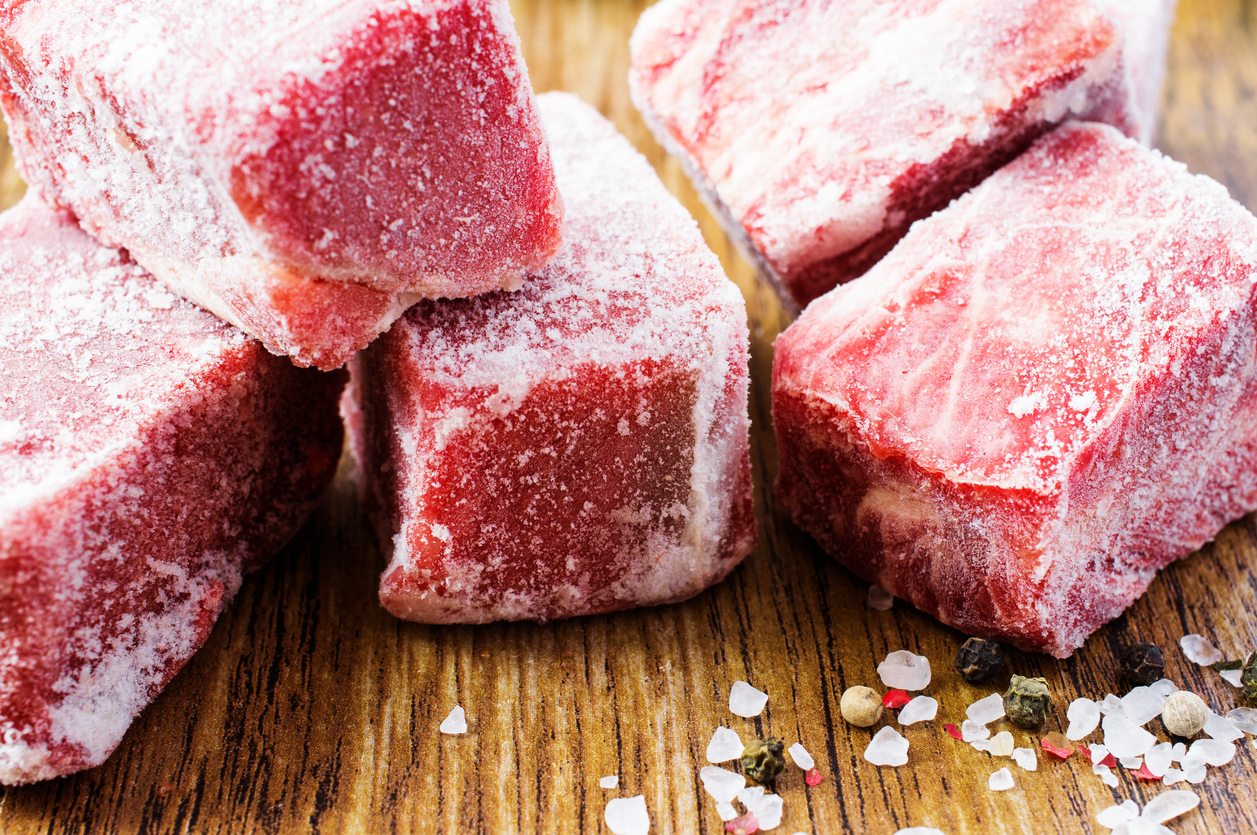The average freezer life of your favourite household foods
It’s easy to think that freezing your food is as straightforward as throwing items in, shutting the door and letting the low temperatures do the rest. Then, when it’s time to defrost, you’ll have a lovely preserved meal/ingredient that’s ready to eat or add to your next culinary creation.
The truth, however, is a little different. There’s something of a fine art to freezing food, whether it’s fruit, veg or leftovers. A dig through what’s stashed in your freezer might surprise you, especially if you’ve not checked it for a while. Sure, the food’s life will have been lengthened, but that doesn’t necessarily mean it’ll be as fresh as when you put it in.
Once past its freezer life, the quality and texture of your favourite food will diminish, losing the flavour and nutrients it was once so full of. But it doesn’t have to be this way. Here, we’ll show you the way to freeze some common household foods, including how long they should actually be frozen for and top tips to make sure they get used in time.

Best practices for efficient freezing
Before we get onto the specifics, keep these handy habits in mind if you’re looking to make the most of your freezer and its space:
- Freezers are at their most efficient when they’re full. That said, be careful not to overfill it – air has to be able to circulate easily in order to maintain the temperature.
- Wait for food to cool before storing. Slightly warm foods could cause a rise in temperature.
- When freezing large quantities, use the ‘fastfreeze’ setting if the appliance has it.
- Stackable square or rectangular containers stacked take up less space.
- If you’re freezing liquids, leave a little space in the container. Liquids expand when freezing, so don’t fill containers right to the top.
- Items of food that might stick together should be divided by baking parchment, foil or freezer paper.
- Label containers with details of the contents, date and quantity/number of servings.
- Write the expiration date on anything before putting it in the freezer; this will keep you and your family safe from foodborne illnesses.

Freezing meat
The topic of freezing meat is always an interesting issue. Though eating frozen meat won’t necessarily make you ill, the difference in taste is certainly noticeable. And the rule of thumb – for all food really – is that storing it at exactly 0°F means it’s safe to eat indefinitely.
However, that temperature has to occur without fluctuation in order to keep harmful bacteria away. The process of thawing and refreezing can disrupt the bacteria and mould that naturally grow in ageing food, letting them multiply when the temperature rises enough.
That said, over in the US, the USDA recommends chucking out any uncooked steaks and chops after a year in the freezer, while mince and anything ground should go after just 4 months. Meanwhile, they advise frozen cooked meat should go after 3 months.

Freezing fruit
If you’re in the habit of freezing fruit, then make sure to do it right. Wash fruits and throw out any damaged fruit before freezing. Delicate berries like strawberries or raspberries should be arranged in a single layer on a baking sheet and then frozen. Once this is done, transfer them to a plastic freezer bag or container.
Anything that tends to brown, like apples, peaches and apricots, should be treated with ascorbic acid, which is the fancy name for vitamin C. You can find the powdered form in health food stores; add ½ a teaspoon of the powder to 3 tablespoons of water and place over your cut fruit. Alternatively, you can do a mixture of water and lemon juice; just be sure to dry before freezing.
Place your fruit in air-tight containers or freezer bags, making sure to get as much air out of the bag as possible. Fruits should be stored in the freezer no longer than a year.

Freezing vegetables
When freezing vegetables, it’s important to do one thing beforehand: blanch them. Why? Blanching prevents enzymes from damaging the colour, flavour and nutrients of your veggies, destroying harmful micro-organisms on the surface of the veg too. To blanch veg, you need to place them in boiling water for 1-2 minutes, and then quickly submerge them in ice water to prevent them from cooking.
This extends the freezer life of veg from 3-4 months to 10-12 months. So, while the process may feel like a hassle, it’s well worth the extra effort to lengthen their quality and integrity. Plus, it works particularly well for veg that needs to be diced when used in soups and stews.
We hope this article has helped you become wise to the ways of freezing. Looking for more kitchen ideas? You’ll find the full range of Breville products, whatever you’re in need of, on our homepage.
